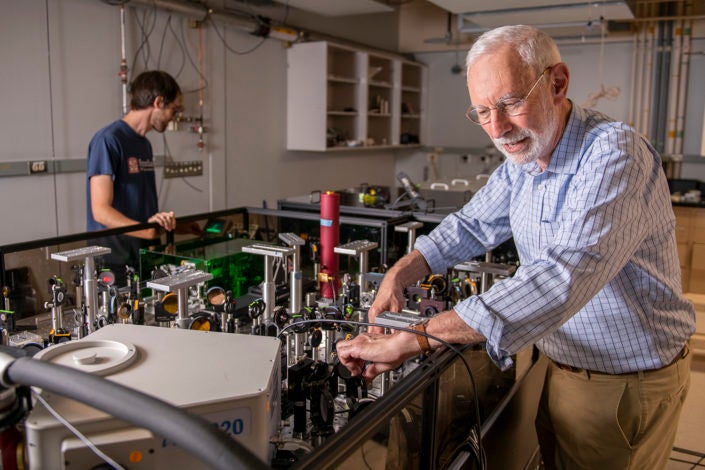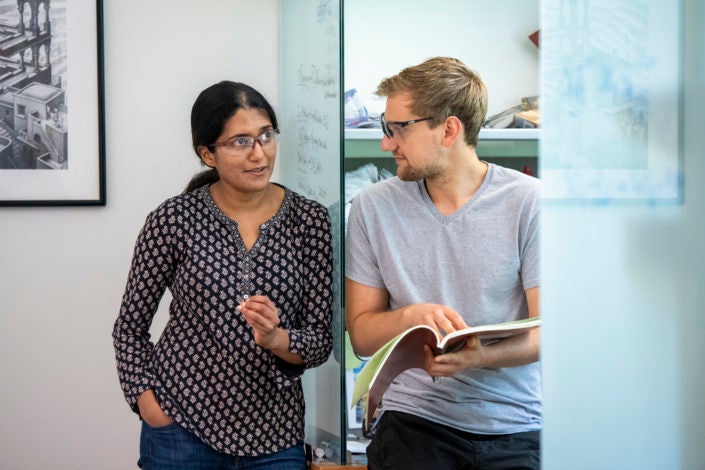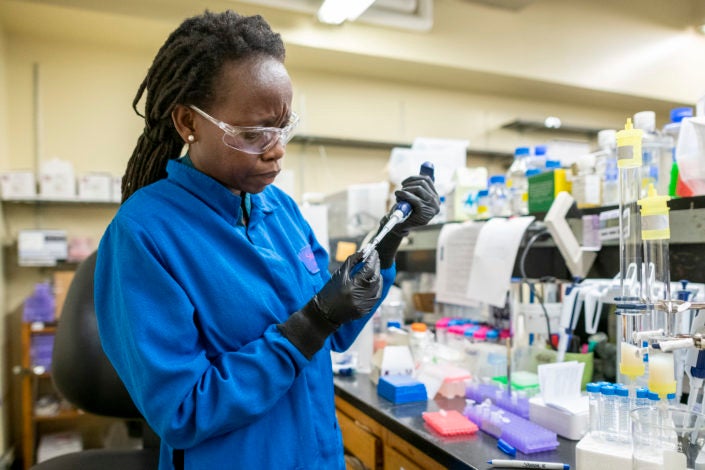What it’s like to be a chemist
In the third in a series on what the lives of Stanford researchers actually look like, chemists Noah Burns, Laura Dassama, Michael Fayer and Hemamala Karunadasa talk about their paths into the field, the joys of making new molecules and the way in which “the central science” pervades our lives.
Michael Fayer surveys the world around him and sees something that most of us do not: chemistry. It’s not that Fayer, a professor of chemistry, sees no value in anything but academic chemistry research. It’s just that when it comes down to it, chemistry has more to do with ordinary human experience than any other field. To Fayer, everything from color to nutrition to the greenhouse effect is, first and foremost, chemistry.
“Chemistry just permeates our lives,” he said.
He is not alone in this view. For Noah Burns, it is the basis of life. For Laura Dassama, it is the path to advances in health. And for Hemamala Karunadasa, chemistry is the foundation of civilizations. Chemists call their discipline “the central science” for a reason, because it touches everything in our daily lives. Here, Fayer, Burns, Dassama and Karunadasa share how they got into chemistry, the joys and frustrations of their academic lives and what chemistry, the central science, means to them.
Fayer is the David Mulvane Ehrsam and Edward Curtis Franklin Professor in Chemistry. Burns is an assistant professor of chemistry and a member of Stanford ChEM-H. Dassama is an assistant professor of chemistry and an Institute Scholar of ChEM-H. Karunadasa is an assistant professor of chemistry and a Center Fellow of the Precourt Institute for Energy.
Photographs by L.A. Cicero
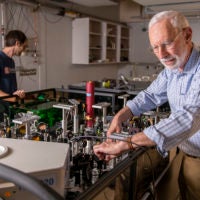
Michael Fayer
Fayer came to Stanford in 1974 and was elected to the National Academy of Sciences in 2007. Here, he explains why chemistry interests him more than black holes, why chemists call it the central science and what it’s actually like in a chemistry lab. (Hint: There’s a lot of plumbing.)
“It doesn’t matter what it is, if it affects you in daily life, it’s molecules and atoms. And understanding these things from antibiotics to microelectronics, those are the areas of science that count on Earth in our daily lives.”
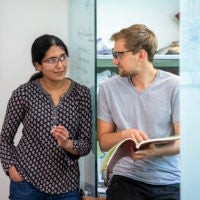
Hemamala Karunadasa
Karunadasa joined the Department of Chemistry in 2012 and built a lab centered on developing materials for clean energy. She spoke about how she – slowly – came to love chemistry, how molecules define civilizations and the need to show others what life as a scientist is really like.
“If you think back, materials have defined civilizations, right? We went from the Stone Age to the Bronze Age to the Iron Age, and it’s very exciting to think, what’s the material that will define our future?”
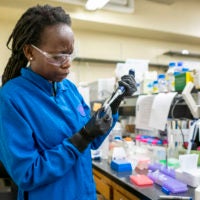
Laura Dassama
Dassama joined the Stanford faculty just last year. She spoke about coming to chemistry after assuming, like many chemists, she would be a doctor, how launching a new lab is like starting a new business and how she sees the world – even health – in terms of molecules.
“I was interested in human health, but I really wanted to understand the nitty-gritty details. Chemistry gave me satisfaction because it was focused on molecular-level understanding. I thought, ‘That’s what I need to be doing.’”
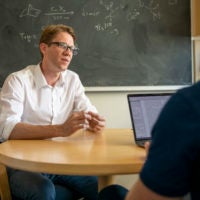
Noah Burns
Burns has been at Stanford since 2013 and focuses on molecules called natural products. He spoke about the romantic, even artistic side of doing chemistry, the curiosity that drives him and how it’s the people around him that make the endeavor worthwhile.
“It’s hard work. It’s not construction, but it is labor. It’s the human aspect of it that makes it. It’s mentoring students, it’s the joy of discovery and experiencing that as a community. It’s a gift. I feel so lucky that I can do that.”

